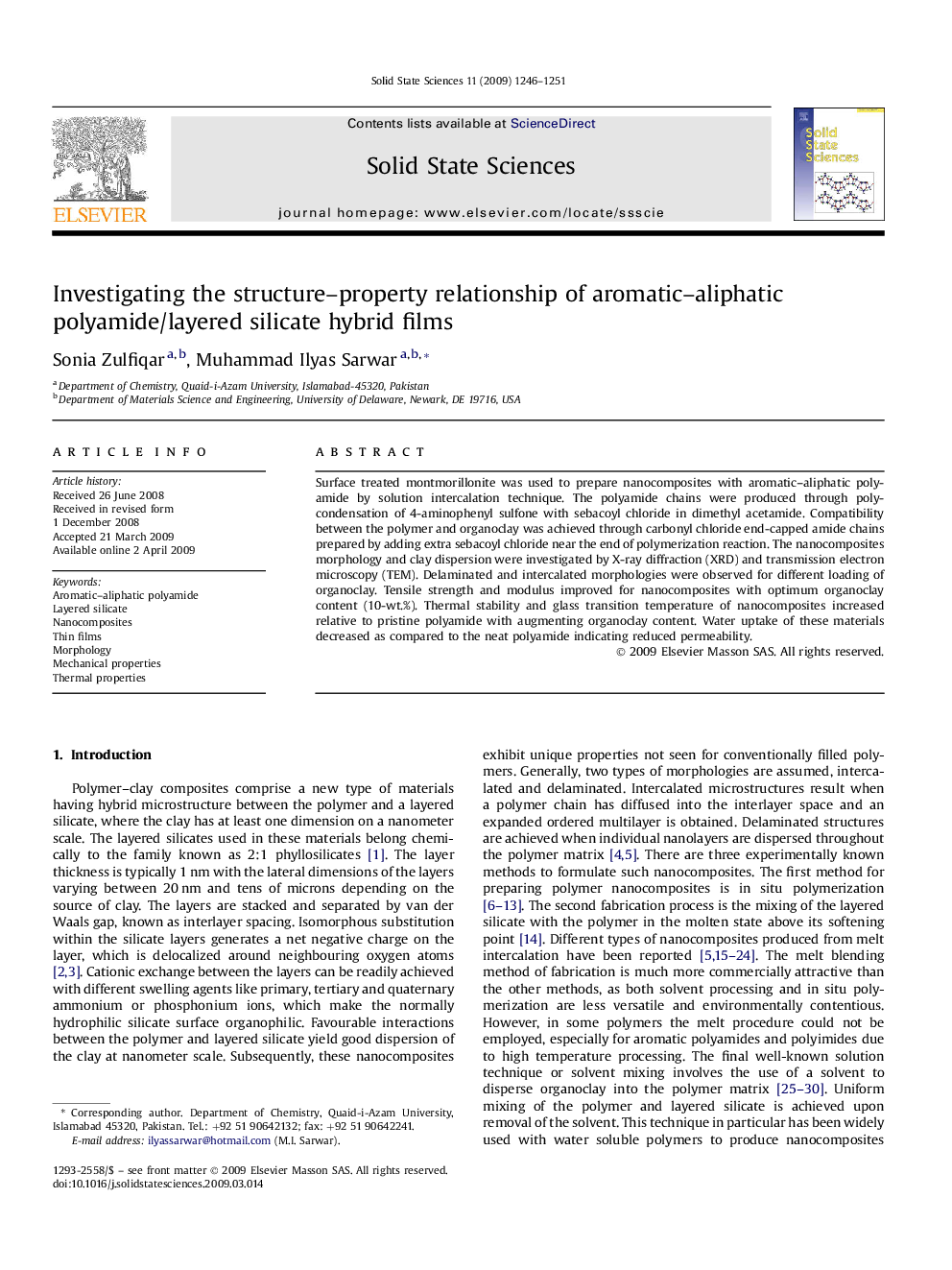| Article ID | Journal | Published Year | Pages | File Type |
|---|---|---|---|---|
| 1506353 | Solid State Sciences | 2009 | 6 Pages |
Surface treated montmorillonite was used to prepare nanocomposites with aromatic–aliphatic polyamide by solution intercalation technique. The polyamide chains were produced through polycondensation of 4-aminophenyl sulfone with sebacoyl chloride in dimethyl acetamide. Compatibility between the polymer and organoclay was achieved through carbonyl chloride end-capped amide chains prepared by adding extra sebacoyl chloride near the end of polymerization reaction. The nanocomposites morphology and clay dispersion were investigated by X-ray diffraction (XRD) and transmission electron microscopy (TEM). Delaminated and intercalated morphologies were observed for different loading of organoclay. Tensile strength and modulus improved for nanocomposites with optimum organoclay content (10-wt.%). Thermal stability and glass transition temperature of nanocomposites increased relative to pristine polyamide with augmenting organoclay content. Water uptake of these materials decreased as compared to the neat polyamide indicating reduced permeability.
Graphical abstractSchematic illustration of formation of hydrogen bonds in aromatic–aliphatic polyamide/DAD–MMT nanocomposites. Figure optionsDownload full-size imageDownload as PowerPoint slide
